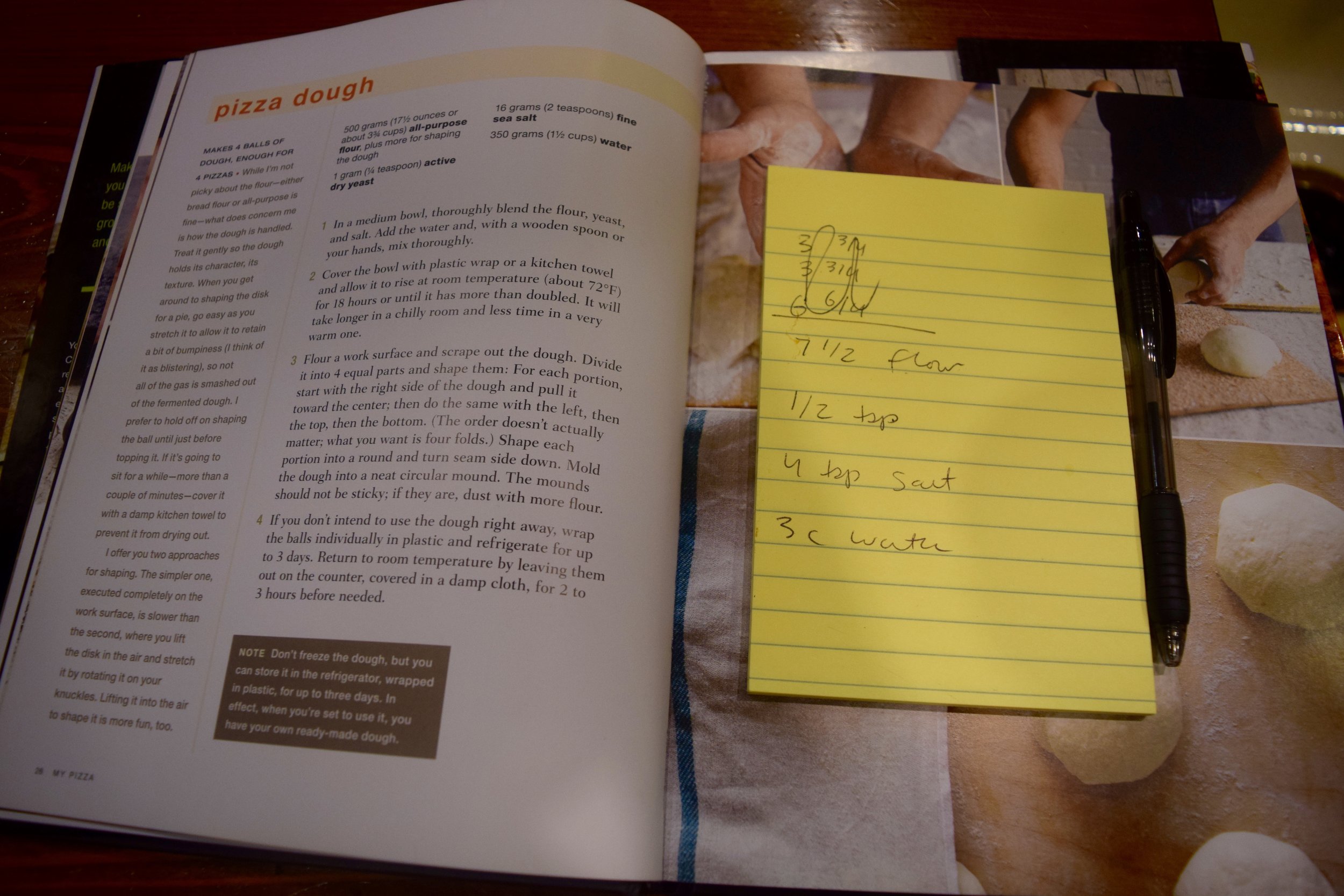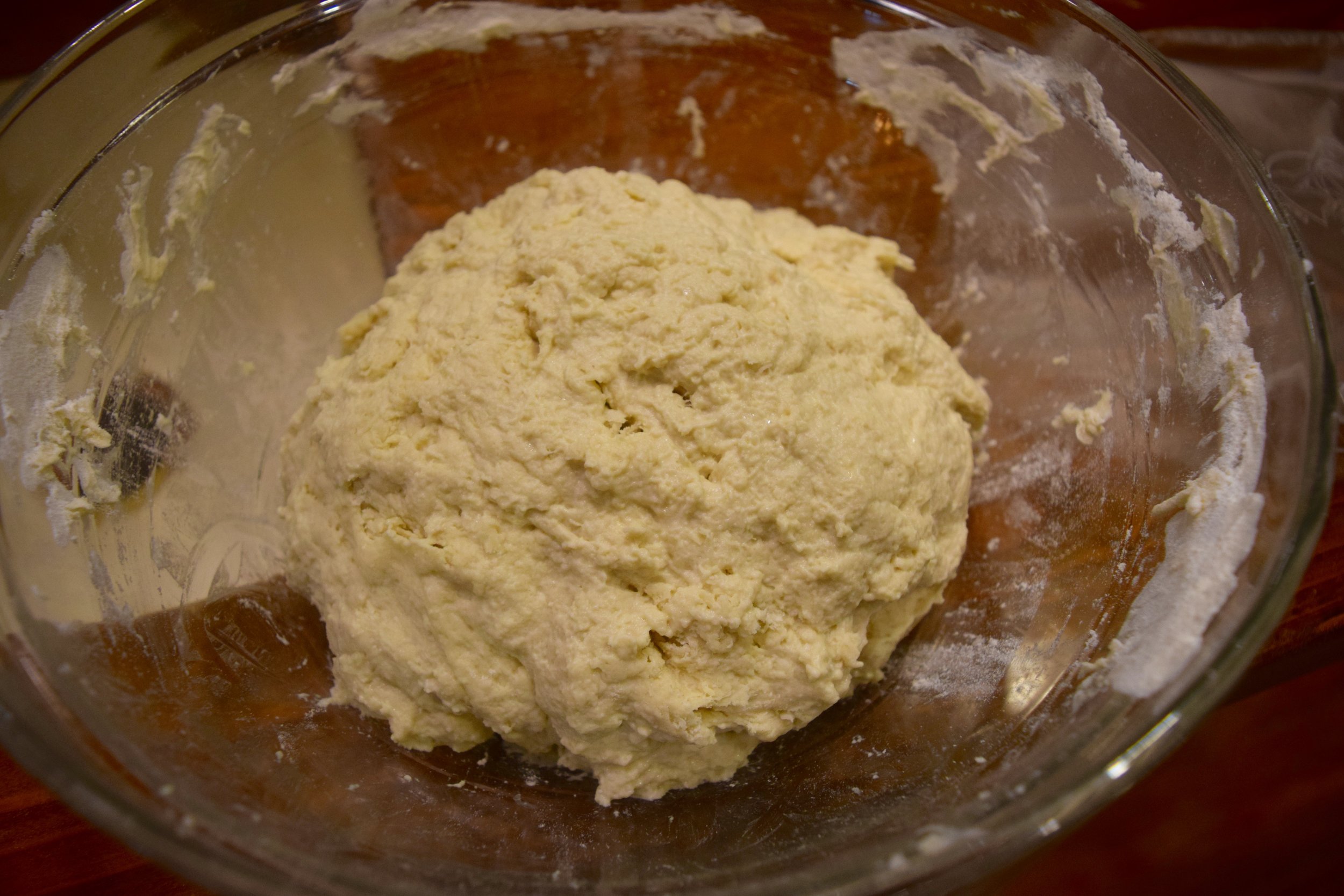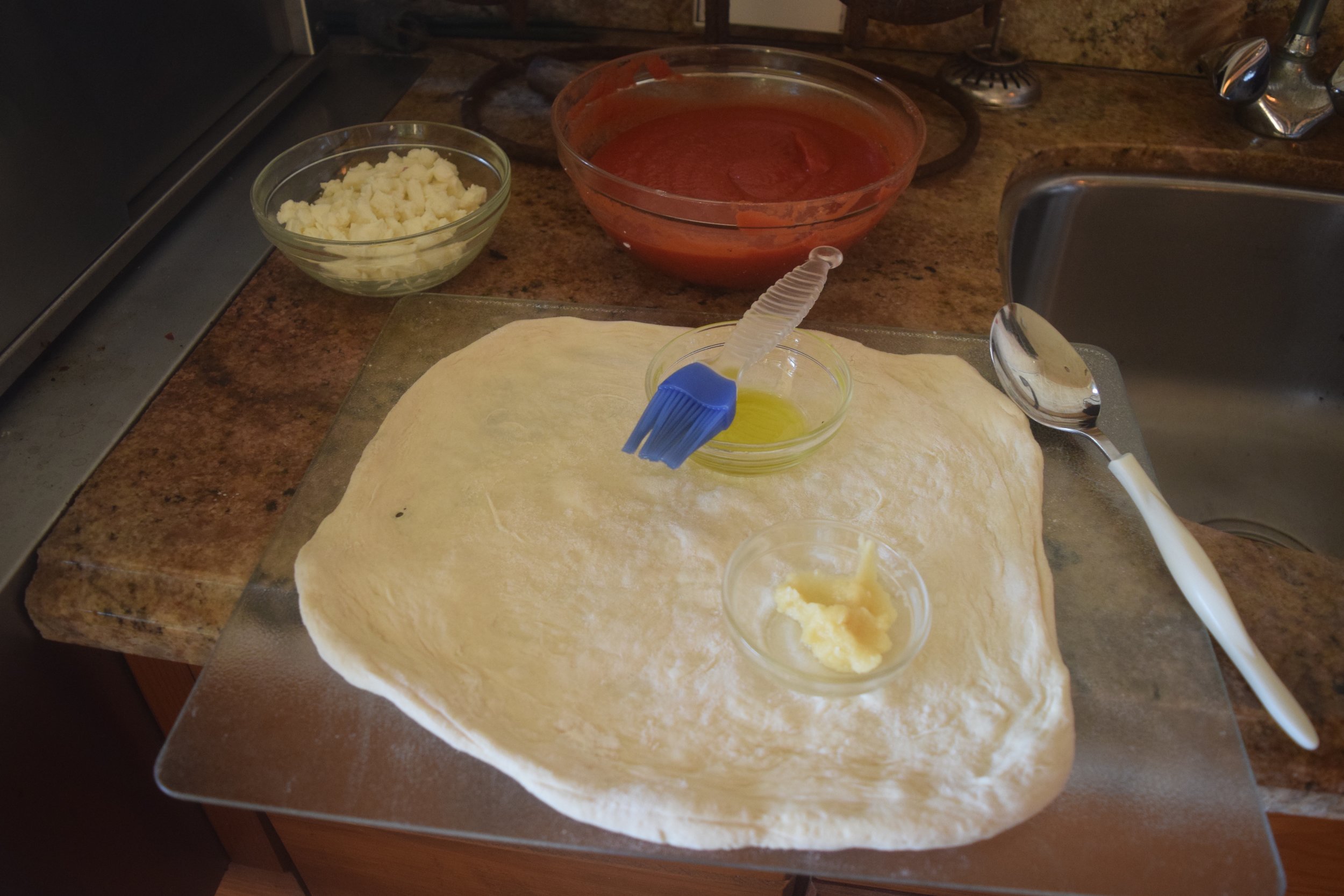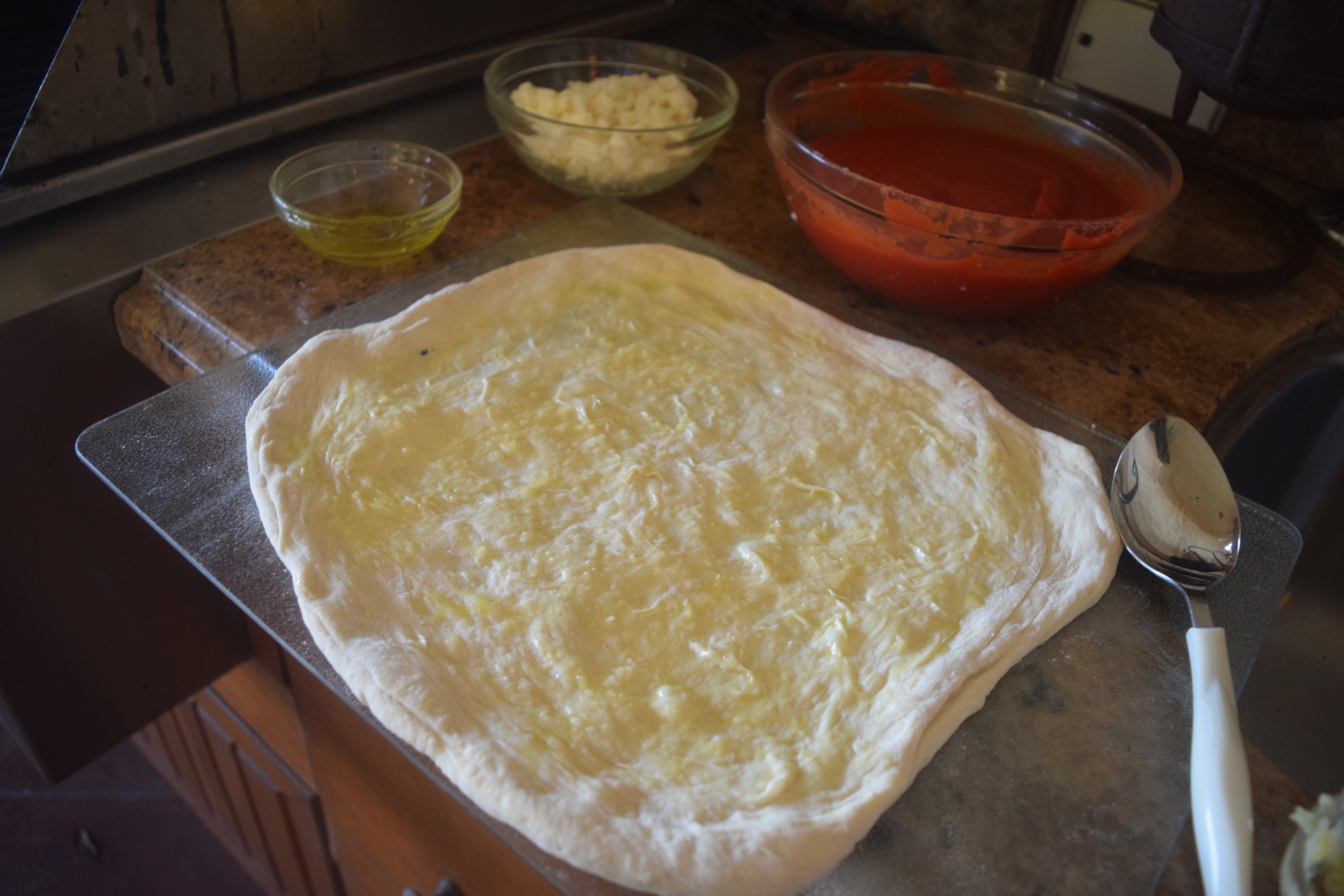I can count on one hand the number of times I've ever made a yeast based dough. While I'm an experienced baker in some regards, in others, like yeast based doughs, I am not. While my family has a tradition of making pizza every time my brother and I are home to visit, I'd yet to be placed in charge of making the dough itself. Picking topping pairings, preparing my signature potato pizza (recipe soon!), yes, but never before had I come face to face with actually making dough.
I have a pretty great collection of cookbooks, especially cookbooks written about Italian cuisine, but I knew exactly where to turn for all things leavened. Who else but Jim Lahey? You might know him for his famed no knead bread recipe published in the New York Times, which has over 2,500 reviews, or as the founder of Sullivan Street Bakery and Co. Pizzeria. Lahey is also the author of a few cookbooks: My Bread, The Sullivan Street Bakery Cookbook, and of course his book My Pizza. I'd previously had some pretty life changing experiences while dining at Co. (I consider their bread, cultured butter, and olive oil appetizer to be last meal worthy), so I knew that my odds of going wrong with Lahey, who seems to an authority on these things, were next to zero.
The dough after it was left to rest, covered loosely, for 18 + hours.
And can you believe that? Some flour, some water, some salt, some yeast, and about 18 hours of patience and voila. A perfectly respectable, boozy, bubbling blob of pizza dough. In fact, once I scooped it out of the bowl, it rolled into a ball so quickly and with such ease that I didn't have time to shoot any progress photos. The dough was elastic, gave little resistance when it came time for stretching, and held together beautifully. Who would have known it could be so simple to make something so infinitely versatile?
Jim Lahey's No Need Pizza Dough
- 500 grams (17 ½ ounces or about 3 ¾ cups) all-purpose flour, plus more for shaping the dough
- 1 gram (1/4 teaspoon) active dry yeast
- 16 grams (2 teaspoons) fine sea salt
- 350 grams (1 ½ cups) water
In a medium bowl, thoroughly blend the flour, yeast, and salt. Add the water and, with a wooden spoon or your hands, mix thoroughly.
Cover the bowl with plastic wrap or a kitchen towel and allow it to rise at room temperature (about 72°F) for 18 hours or until it has more than doubled. It will take longer in a chilly room and less time in a very warm one.
Flour a work surface and scrape out the dough. Divide it into 4 equal parts and shape them: For each portion, start with the right side of the dough and pull it toward the center; then do the same with the left, then the top, then the bottom. (The order doesn’t actually matter; what you want is four folds.) Shape each portion into a round and turn seam side down. Mold the dough into a neat circular mound. The mounds should not be sticky; if they are, dust with more flour.
If you don’t intend to use the dough right away, wrap the balls individually in plastic and refrigerate for up to 3 days. Return to room temperature by leaving them out on the counter, covered in a damp cloth, for 2 to 3 hours before needed.
As you can see here, I even dared to attempt grilling a pie or two. My results weren't the best (the grill got too hot) but previous attempts have worked beautifully and I suggest it if you're looking for something to throw together fast on the grill. As for the sauce used on this pie, I deferred to Lahey who suggest using a can of pureed tomatoes with the addition of a little pinch of salt. I find the simplicity of this is perfect for my tastes! It also simplifies the work that needs to be done to prepare any additional toppings. For my grilled pizza I added a little bit of minced garlic and olive oil to the bare dough, then spooned on sauce, and then showered with mozzarella. When the pie came out we added fresh basil leaves and parmesan to finish it. Can't go wrong with the classics!











